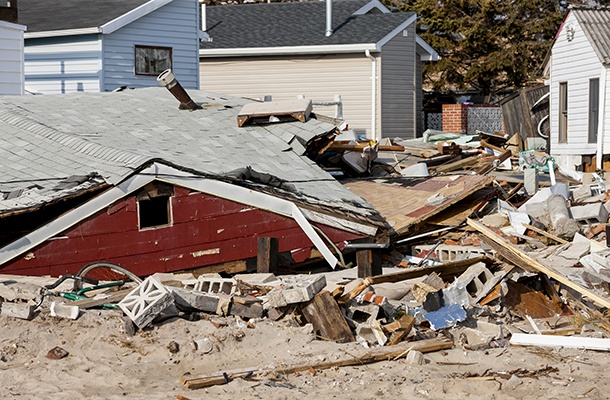The Legacy of Hurricane Sandy and the NFIP

It’s been nearly six years since Hurricane Sandy made landfall in October 2012, but in many ways, we are still reeling from the damage it left behind. By early 2014, approximately 2,000 policyholders had filed cases against National Flood Insurance Program (NFIP) insurers in federal courts, alleging that insurance companies unfairly limited - or flat-out denied - coverage on valid flood insurance claims from damage caused by Hurricane Sandy. There were so many cases stemming from this premise that the Eastern District of New York created a “Sandy Docket” with particular discovery rules. In her Lawline program on the NFIP, attorney Melissa Luckman says she has been personally involved in cases where homeowners were paid out only a third (or less!) of what the claims were worth.
News of this type of fraud and the impact of the Raimey decision was unfolding as late as 2015. And yet, the largely unsuccessful attempts to overhaul the NFIP have been consistently met with backlash. Now, the U.S. has again been hammered with natural disasters, like hurricanes, wildfires, and mudslides. In anticipation of a 2018 clean-up the question:
What exactly is the legacy of the Sandy litigation on the NFIP?
Well… it’s not a great one, that’s for sure. The NFIP itself has been in the red since 2005’s Hurricane Katrina, and has over 1,000 open disputed claims from Sandy (since the Sandy Docket, FEMA has paid out 58 million dollars to claimants, who had until October 15, 2015 to request a claims review). In 2012, as a response to the NFIP’s mounting debt, the Biggert-Waters Act was passed to alleviate some of the taxpayer burden of disaster. In 2014, to handle the immediate premium increases that followed, Congress passed the bipartisan Homeowner Flood Insurance Affordability Act, which delayed the reforms for four years.
Roy Wright, the NFIP administrator, wrote in a 2017 blog post that, although Katrina and Sandy “felt like once-in-a-lifetime events, there is actually a 50% chance within a 10-year period the NFIP will once again experience Hurricane Sandy-size losses.” That 50% chance already happened with the most recent bout of tropical storms that hit this past fall. A recent New York Times article reported that Mick Mulvaney, the director of the White House Office of Management and Budget, said in a letter to Congress “Put plainly, the NFIP is not designed to handle catastrophic losses like those caused by Harvey, Irma and Maria.”
As if to illustrate Mulvaney’s point, in October 2017, the NFIP exhausted its 30 billion dollar borrowing capacity and was granted a 16 billion dollar bailout - just to keep paying current claims, including the open disputed claims that linger from Sandy.
As of late, the NFIP’s reauthorization status appears to be constantly pending. It was reauthorized on September 30 and December 8 of last year and again on February 9 and March 23 in 2018. It will be up for reauthorization again on July 31, 2018. While FEMA and Congress have never failed to honor flood insurance contracts in place with NFIP policyholders (and considering that even if authorization lapses, FEMA would still have authority to ensure the payment of valid claims with available funds), the impact of a lapse could be catastrophic. Essentially, according to FEMA, the organization would stop selling and renewing policies for millions of properties, potentially affecting approximately 40,000 home sale closings per month.
To quote FEMA directly, “as affected communities recover from the devastating impacts of the 2017 hurricanes, a timely, multi-year reauthorization is critical for insured survivors and businesses. Policyholders need confidence not only that FEMA can pay flood insurance claims, but also that the NFIP will be able to sell and renew policies to help them protect against future flooding. Flood insurance - whether purchased from the NFIP or through private carriers - is the best way for Americans to financially protect themselves from losses caused by floods.” In a world post-hurricane Sandy, policyholders need to trust that insurers aren’t unfairly limiting them under the NFIP, ultimately costing millions more in reopening claims to fix the problems.
.png)


.png?width=352&name=EnvironmentalLaws19%20(1).png)

.png?width=352&name=bigstock-America-Dollars-Banknotes-Mone-258009538%20(1).png)